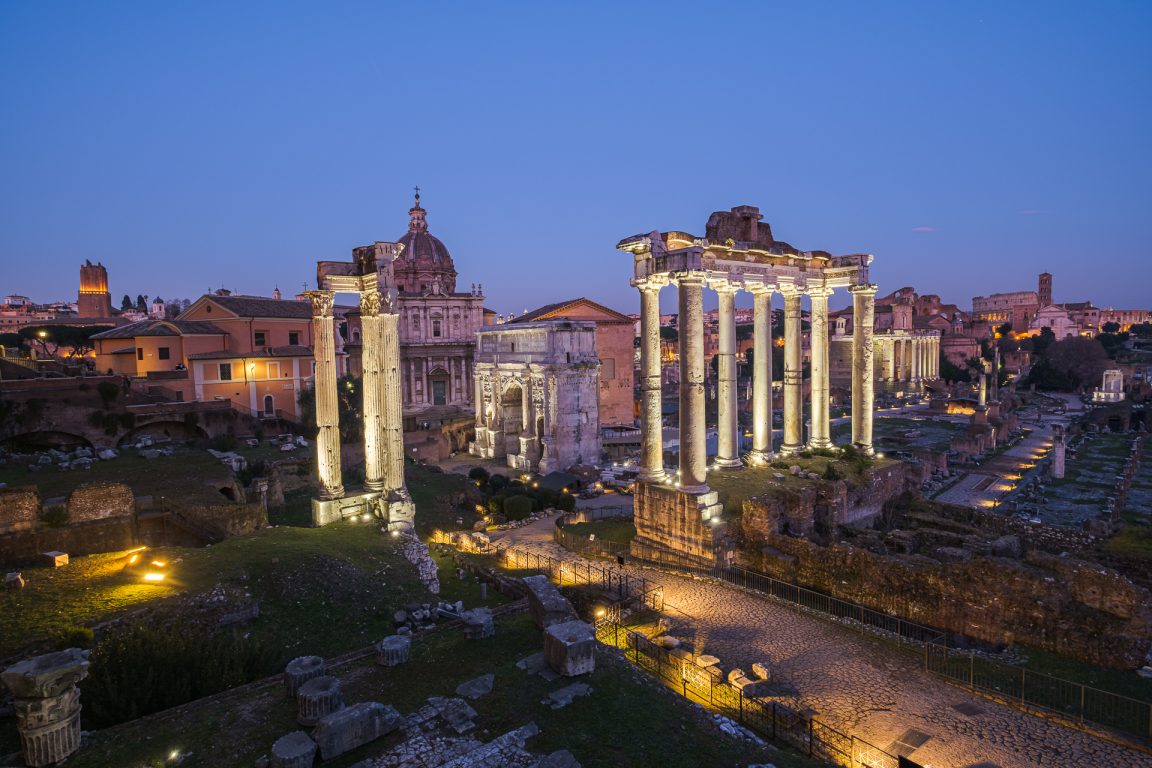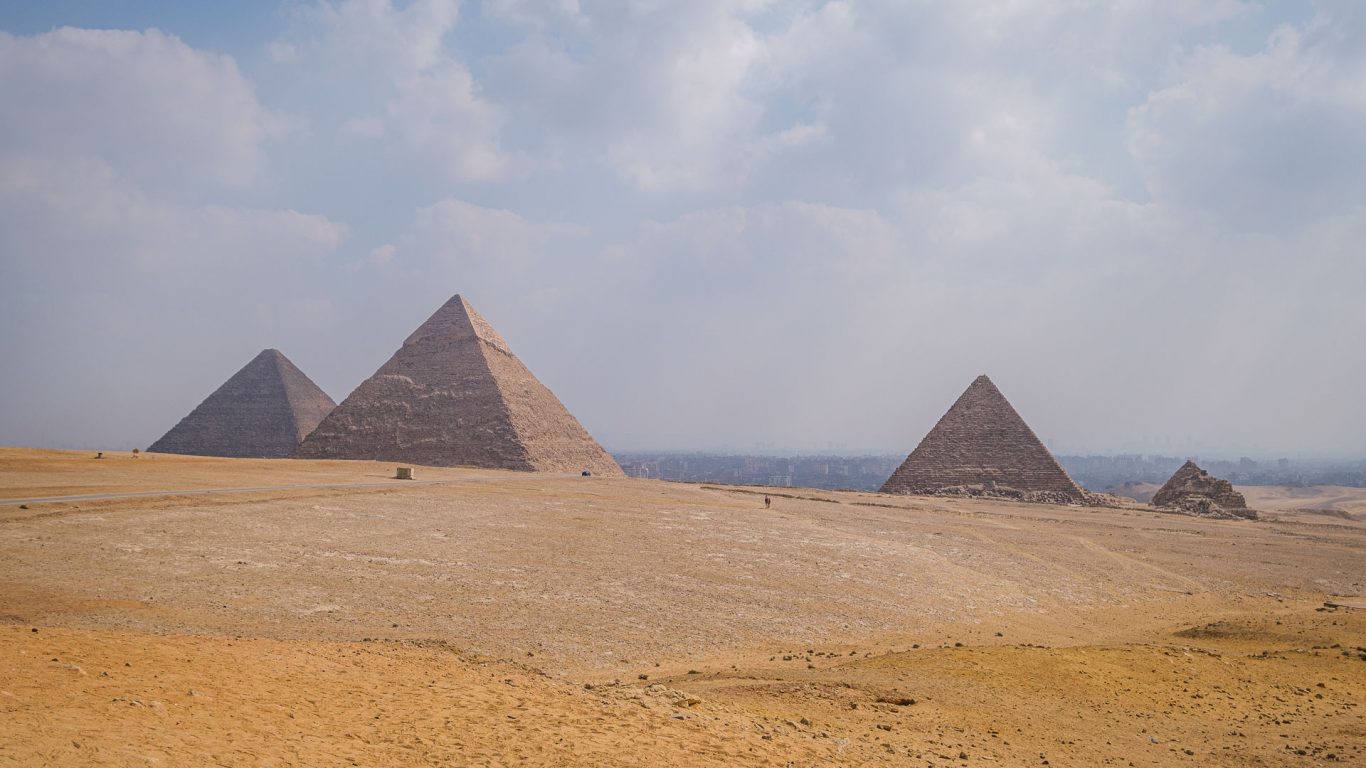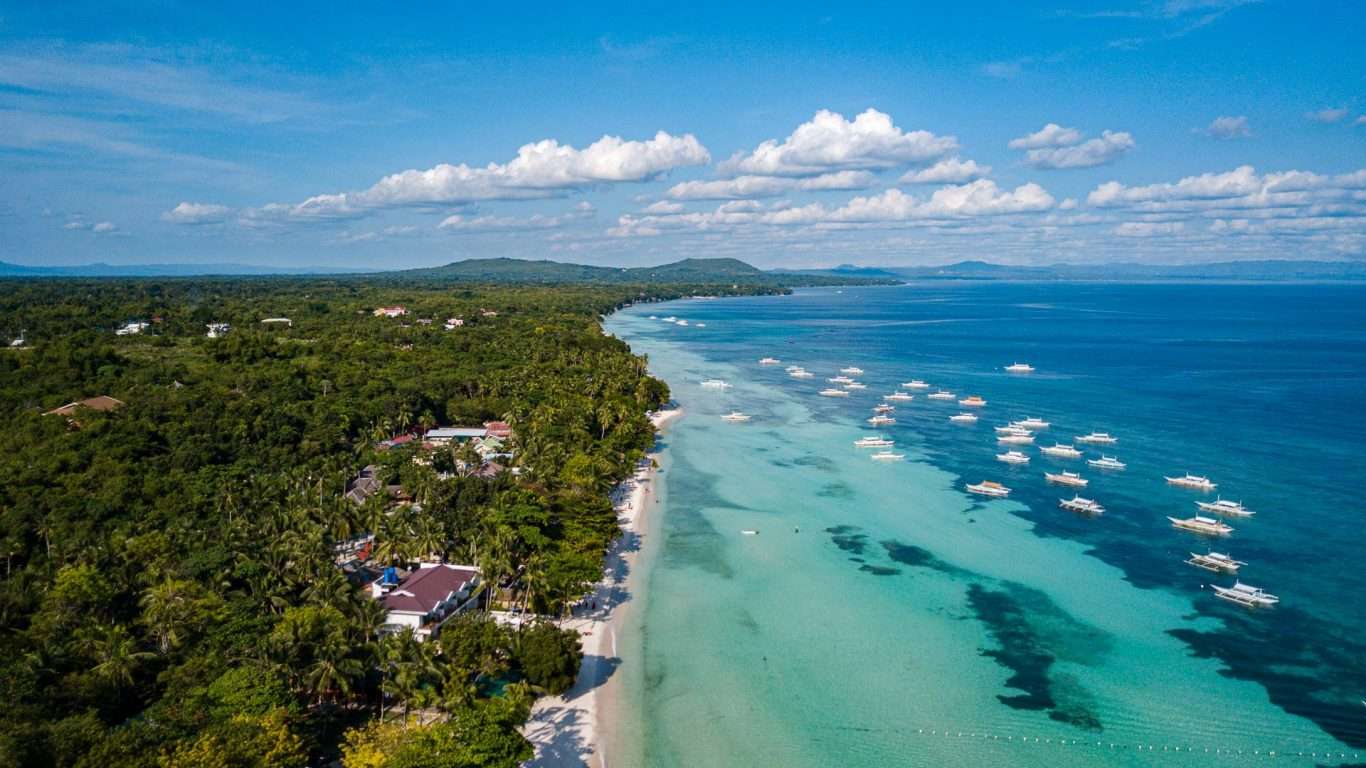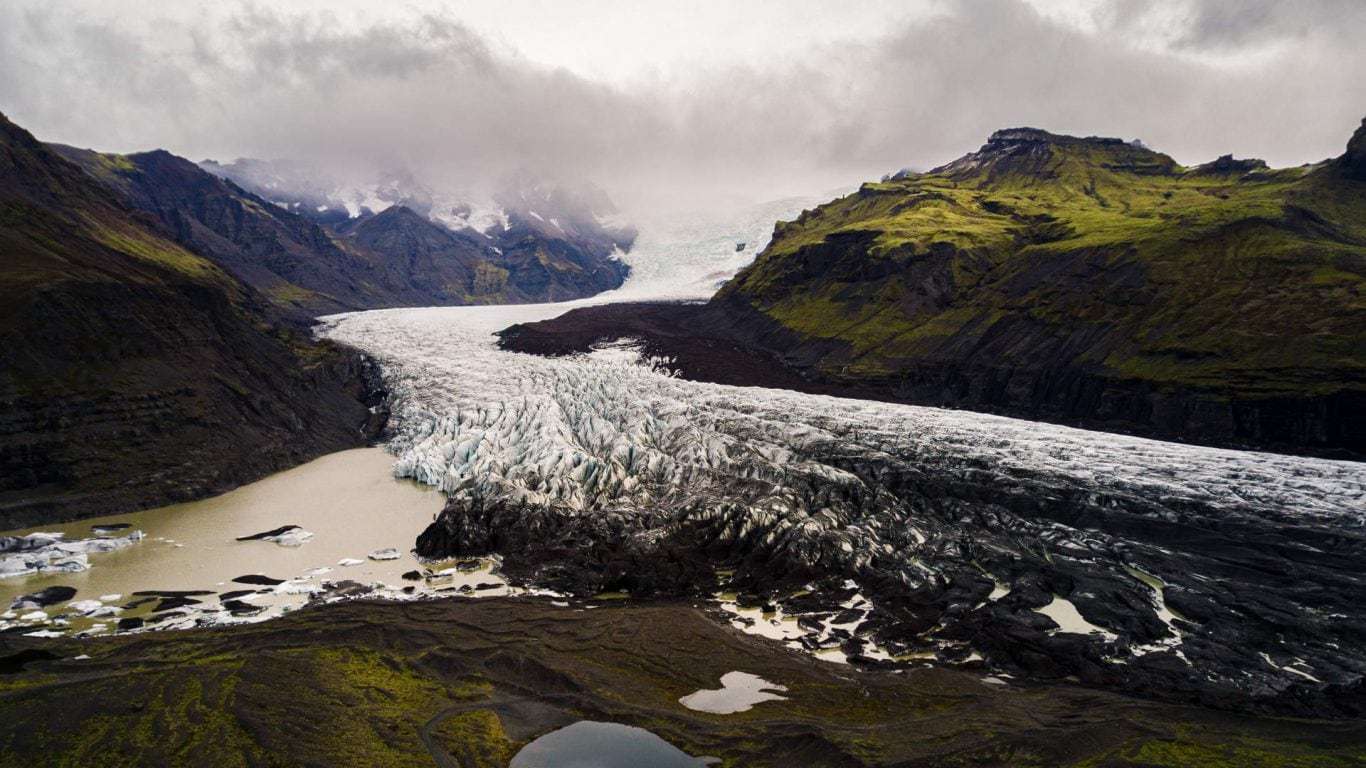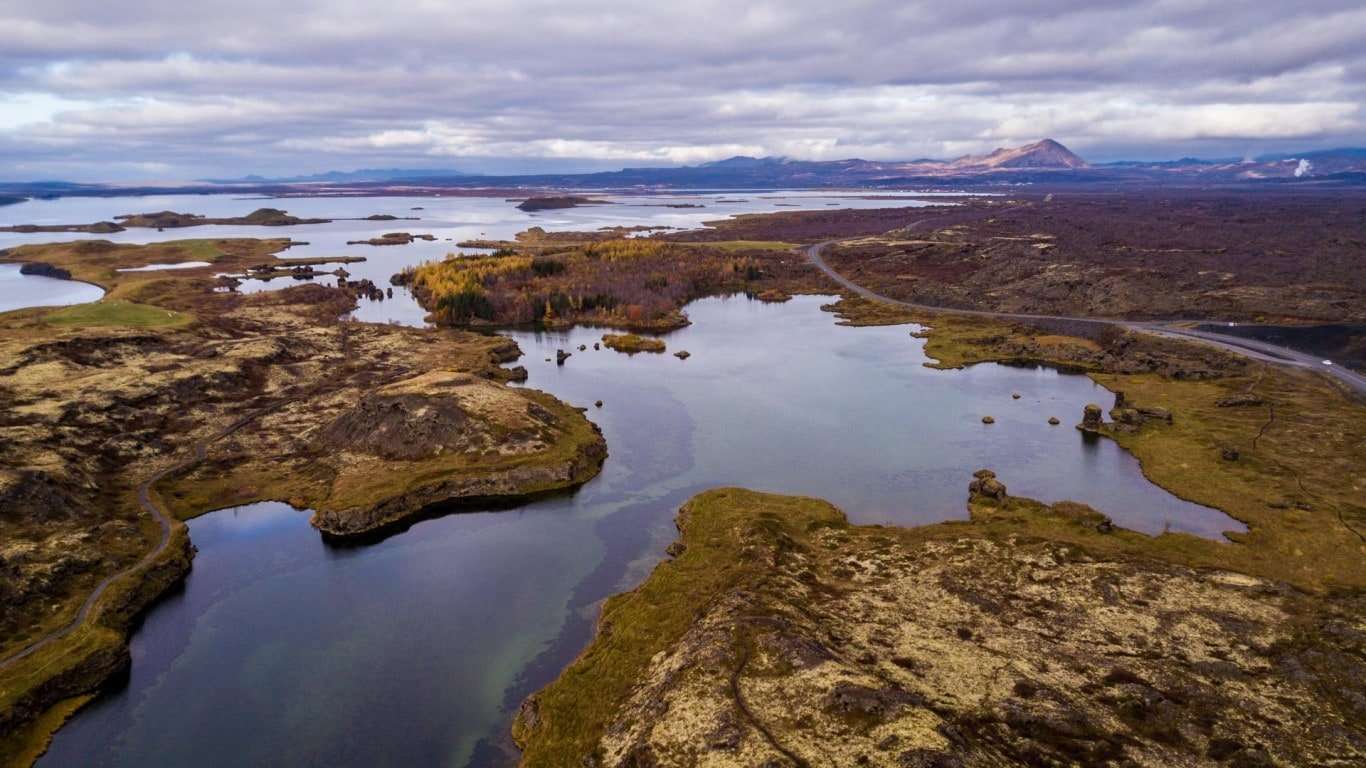The capital of Hungary, Budapest is by now one of Europe’s most visited capitals. With so much to see and do, the question is inevitable: what to visit in Budapest? We answer that and all the questions in the proposed travel itinerary below.
Why visit Budapest

Budapest, the capital of Hungary, is also the country’s main financial, corporate and cultural center. Founded in 1873 by the merger of two cities, Buda on the right bank and Pest on the left bank. The river Danube divides the city but, its bridges unite it.
Elected the best European destination of 2019, Budapest is often dubbed the ‘Paris of the East’. It is one of the most beautiful capitals in Europe. It may not be the most elegant, but, it is full of enchanting scenery, history, and culture.
The past communist rule is long behind us. Today, Budapest is synonymous with vibrant, where the old and the modern complement each other.
Buda, on the right bank, among hills ‘hides’ a historical center well kept. It is captivating, more expensive than the opposite side, but, also more relaxing. Pest, meanwhile is ideal for great walks, as it is flat. On this side of the city, the hustle and bustle are constant, among the buildings, there are many eateries, restaurants, and bars.
Budapest is a charming and romantic capital. The Danube, the Buda Castle Quarter, and Andrássy Avenue are UNESCO World Heritage Sites. After a visit, you can well understand why. This travel itinerary presents what to visit in Budapest.
How to get there
Hungary’s capital is by these days a city of easy access. Long gone are the days when it was difficult to fly from any European country.
From Portugal, it has become even easier, with the opening of new routes to Budapest. Demand increases supply, and Budapest cannot ‘complain’ about a lack of tourists.
In this sense, from Portugal, there are direct flights from Lisbon and Porto by Wizz Air, Ryanair. The TAP guarantees flights only from Lisbon, and from Faro, you can fly by Ryanair but, with stopovers (information as of February 2020). For exact information, you can search all flights on
As travel is increasingly uncomplicated, there is the opportunity to visit Budapest and another European capital next door such as Vienna or Prague. There are several travel routes that encompass the 3 capitals. The connection is made via trains or buses, with quite considerable prices.
When to visit
While any month of the year is good to visit Budapest, the winter months can be more tricky. Much more than when to visit the question is about what to visit in Budapest. We’ll get to that in a moment.
Between December and February, the climate is harsh, with very cold and even snow. The city is covered in white, great for photography, but, with greater difficulty in transport. In any case, and as nothing is exact, we visited in early February, saw no snow at all and temperatures were not pleasant.
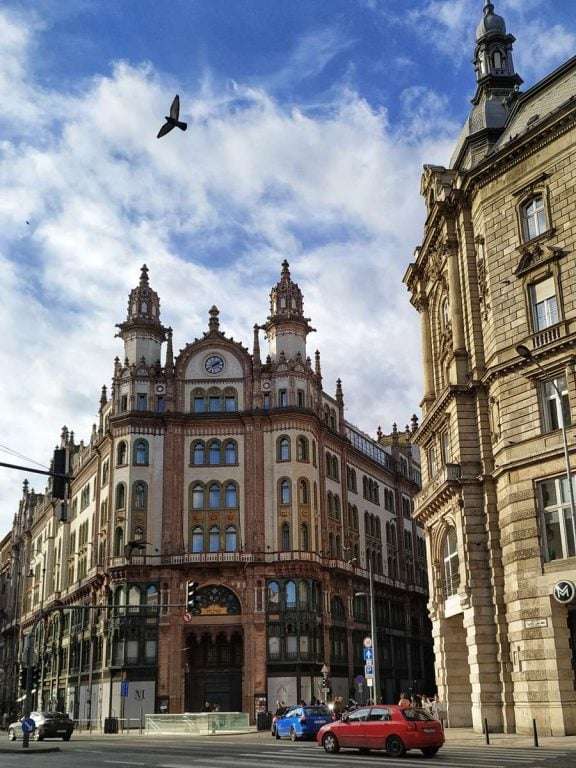


The months of spring and summer(from March to August), are some of the most sought after. With the temperatures rising and long days. There are also more outdoor events, such as music festivals from jazz to opera.
From September to November, in the middle of autumn, it can be a good choice for those looking for temperatures that are not too low and fewer tourists.
How to get from the airport to the city centre
The Budapest airport, known as Liszt Ferenc International, is just outside the city. As expected there are several types of transport to get to the centre, which actually run 24 hours. We arrived in Budapest already close to midnight, a Saturday and had no difficulty at all.
Here in our travel itinerary, we present the main means of transport between the airport and the city.
Shuttle Bus (100E bus)
This must be the transport most used by tourists to get to the centre. The bus 100E leaves from the airport towards the centre every 20 minutes. The last stop is Deák Ferenc tér. The first bus leaves at 5 am and the last departs the airport at 1.20 am.
The ticket can be easily purchased from the machines at the airport exit, right next to the bus stop. It is possible to pay by cash or card. If you prefer, buy from the driver and pay in cash.
The ticket costs 900 HUF (about €2.70).
Bus 200E
An alternative is the bus 200E. This runs between the airport and the Nagyvárad tér metro station. Once at this station, one can take the metro to any destination in the city. The metro in Budapest operates between 4 am and 11 pm.
The bus runs every day, 24 hours, but, it takes longer than the E100. The ticket costs 350 HUF (about 1€).
Private transfers
An alternative to public transport there are transfers operated by various companies. Hotels also provide their own transport vehicles.
There are also taxis (Fotaxi) and a service called Bolt (equivalent to our Uber in Portugal). The cost to the centre depends on the exact location and traffic conditions. There is a Fotaxi counter at arrivals where you can ask for the estimated cost.
Where to sleep
The accommodation in Budapest is more affordable than in other European capitals. However, you need to plan carefully what to visit in Budapest, to subsequently choose the appropriate part of the city to stay in.
In Budapest getting around is not a problem, so any one of the Buda or Pest areas are ideal for accommodation.
For our stay, we chose to stay in Buda. It is quieter and with a spectacular view of the opposite shore. Our hotel of choice was the Baltazár Budapest Grill & Boutique Hotel.
The Baltazár Budapest Grill & Boutique Hotel is a family-run hotel in the heart of the historic centre of Buda Castle district.
The themed rooms, house artwork inspired by pop culture icons, such as Vivienne Westwood, Keith Haring, Andy Warhol and Jean-Michel Basquiat.
The furniture is original vintage and there are iconic pieces in every room. The hotel makes use of a smart lighting system. The ‘green’ policies are clearly visible, in the bathrooms, there are natural products and there is a call for a reduction in waste and water consumption.
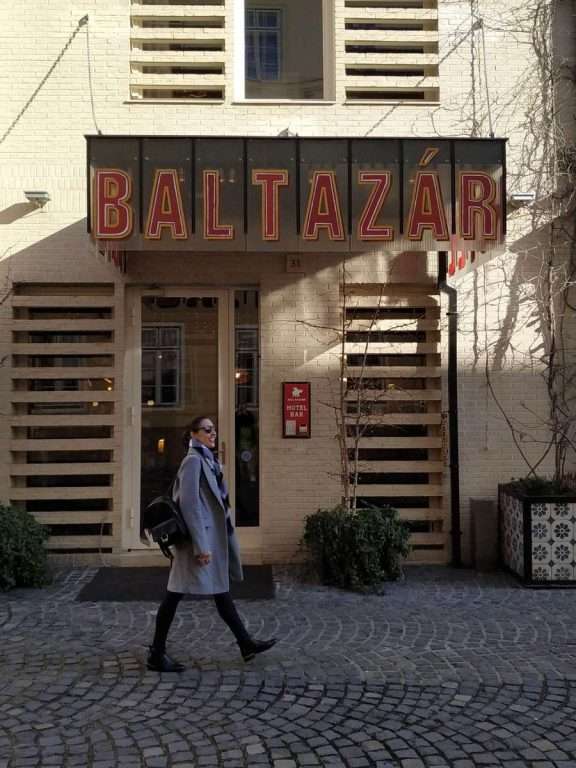

In our room, two paintings were arranged. One of them on the bed, in allusion to the 1948 painting ‘Cristina’s World’ by the American painter Andrew Wyeth. The other, in mention of the well-known ‘American Gothic’ from 1930 by Grant Wood.
On the Pest side, there are a large number of flats that can also be rented for a stay. To book any accommodation in Budapest the best option will be through
How to get around
In Budapest, transportation is no problem. As well as a wide variety, these are also efficient.
We can choose between the metro, buses, trains, the tram, taxis or bicycles. According to what we want to visit in Budapest, any of them will take us to all points of the city.
Metro
The Budapest Metro is the second oldest in Europe, opened in 1896. Strolling through the metro is like taking a journey back in time, as it retains many of the original infrastructures.
Currently, it has 4 main lines and a fifth in planning. The M1 line(yellow) is a Unesco World Heritage Site. The blue M3 line carries the most passengers per day. All lines converge at Deák tér Ferenc station.
The metro runs every day from 4 am to 11 pm. The tickets are simple to get, at any machine at the stations. There are various types of tickets such as:
- Single ticket: 350 HUF (about 1€)
- 10 individual tickets: 3000 HUF (about 8.90€)
- 24-hour pass: 1650 HUF (4.90€)
- 72-hour pass: 4150 HUF (12.40€)
For more information on metro prices, you can consult the official website.
There is also the Budapest Card, the official pass that gives access to services (transport and attractions) for free or at a discount.
Buses
The buses in Budapest are the means of transport used to get where other transport does not reach. They cover a large part of the city, especially on the Buda side. There are more than 200 routes. Ideal for any travel itinerary.
It’s so simple, that the tickets are the same as those in the metro. And bought in the same places. What’s more, they’re cheap, which determines that Budapestinians make daily use of them.
There are also night buses, which can be a great help.
Moreover, the trolleybus, a mix between buses and trams. In operation since 1949, with 15 lines.
Hour: 4 am to 11 pm (every 10/20 minutes)
Tram
With more than 40 lines, the tram is quite popular among tourists and locals. Some lines offer a panoramic view of the city.


Line 2 runs along the margins of the Danube River, crossing the main points of the city. From here we gaze over the hill on the Buda side. Lines 4 and 6 are said to have the most traffic in all of Europe.
The tickets are the same used on the metro and buses and the price very similar to other transport.
Hour: 4.30 am to 11 pm
Green transport in Budapest
As Budapest is a flat city, walking is a good way to see the main sights, as well as being ecological.
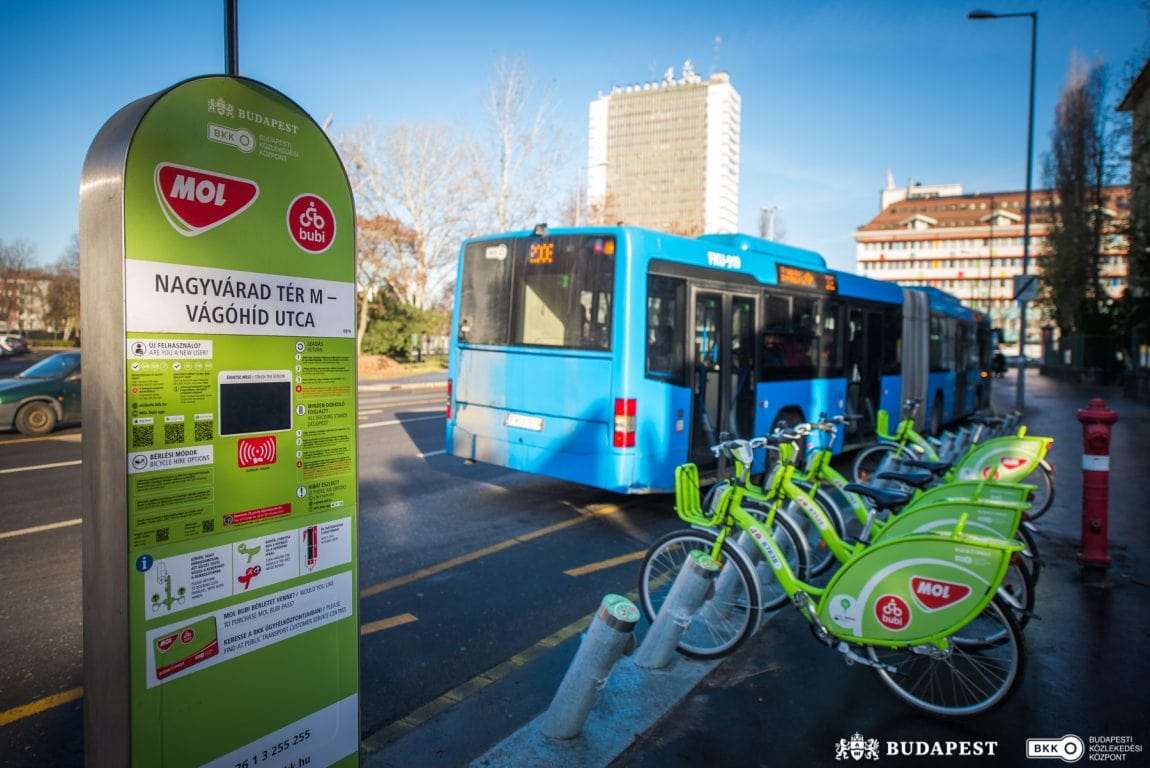
There are many more facilities in European cities these days. In Budapest, one must make use of the bikes, for that, you must register at the page, and buy the appropriate package for the trip, 24 hours, 72 hours, or 1-week package.
Simple to use, pick up any of the bikes scattered around the city with the help of the sensor on the back or the mobile APP.
What to visit in Budapest
Day 1 – Travel Itinerary
Since we arrived on a Saturday night, we no longer had much time to explore the city. The real adventure of our travel itinerary began the next day.
We set out in advance what to visit in Budapest. On Sunday we woke up early and went to explore the area south of Pest in the morning. Our goal was then to cross the Elizabeth bridge so that the sunset would be spent on Gellért Hill. Some of the main points we visited:
Budapest Metro
On the Buda side, we took the metro at Széll Kálmán tér station towards Deák Ferenc tér, one of the busiest stations in the city.
The Budapest metro is an excellent choice for getting around the city. There are several lines and each one leads to a specific point. However, the line called the Millenium Underground, which runs from Vorosmaty to the City Park is one of the most beautiful.
Walking around the metro of Budapest is a journey back in time. A visit is a must on any Budapest travel itinerary.
Central Market Hall
For those who are fond of local markets, Budapest has a fantastic one, the Central Market Hall. Situated on the margin of the Danube River, it is the largest and oldest in the country.
The market is divided into 3 floors. On the first floor are mainly the stalls for meat, spices, and sweets. On the upper floor, is where you can taste the Hungarian delicatessen and buy souvenirs of the country, with various stalls and small restaurants. The lower floor is used for fish shops, vegetable stalls, and butcher shops.
During World War II it suffered significant damage. In 1991 it was renovated and today it is better than ever. It is a place shared by tourists and local people. The market opens every day at 6 am, it closes on Sunday.
Admission: Free
Hungarian National Museum
The Hungarian National Museum founded in 1802 tells the whole history of the formation of Hungary, from its beginnings to the present day.
The building shows its neoclassical lines and an important staircase, a scene of the beginning of a rebellion that would change the history of the country. Inside it houses a vast estate of artefacts, some donated from an important collection of the count Ferenc Széchényi.
Divided into 7 spaces, all with permanent exhibitions. One of the most symbolic is a valuable mosaic from the 3rd century AD that covers the floor of one of the wings.
In addition to the permanent exhibitions, the Hungarian National Museum also houses temporary exhibitions, which vary in theme.
This museum is a must-see not only for those who love history, but, also to learn more about the country.
Hour: 10 am to 6 pm (daily, closed on Mondays)
Entrance: 2600 HUF (about 7.80€)
Váci Street
The Váci Street is one of the main pedestrian thoroughfares of the city. It is also one of the best shopping areas, with big brand shops, restaurants, cafes and lots of movement. Around Christmas time, Váci Street presents tourists and locals with a beautiful Christmas market.
At the end of the street is located the Central Market Hall.
Large Budapest Synagogue & Jewish Quarter
The Jewish Quarter of Budapest does not have a stunning origin. At the time of World War II, the Jews were forced to live in some specific areas of the city and there this neighborhood was born.
The houses of the Jews were marked with the Star of David. At the time the Jewish Quarter had poor conditions, what went in and out was controlled, like a real prison.
Unfortunately, today the Jewish Quarter is completely renovated, with bars, restaurants, art galleries, shops, and is one of the main cultural and nightlife hotspots.

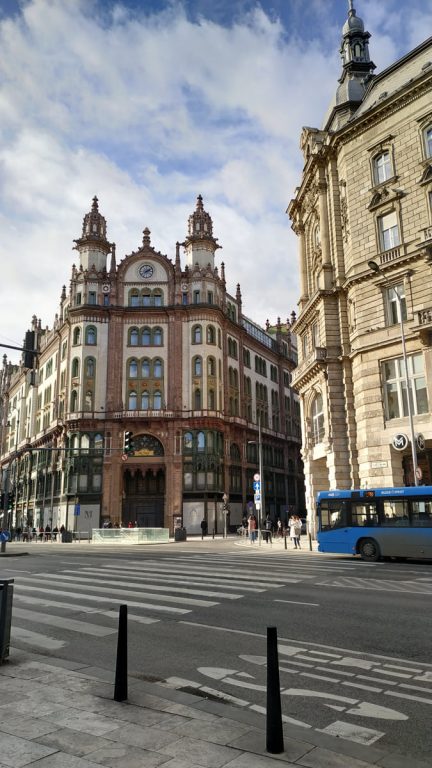
This is also where the Great Synagogue of Budapest (or Synagogue of Dohány Street) is located. It is the second-largest in the world and the largest in Europe, with a seating capacity of around 3000 people. Inside is a memorial in homage to the Jews killed in the Holocaust, the Tree of Life. Each leaf of the tree has the name of a Jew murdered at this time written on it.
Entrance: 5000 HUF/ 14.80 € (Ticket to the Great Synagogue & the Jewish Museum)
Szimpla Kert (Ruin Bar)
The Szimpla Kert or ruin bar is none other than Hungarian pubs. They are located in the Jewish Quarter, and at the time they were created were essentially a place to socialize among locals and drink cheap.
It has gained other proportions nowadays. Tourists are increasingly The Szimpla Kert is one of the most famous and oldest ruin bars, so it deserves a visit.
Elizabeth Bridge
It is the third new bridge in the city and connects the part of Buda to Pest. It is named after Queen Elizabeth, wife of Francis Joseph I.

It was built between 1897 and 1903, but during World War II World Cup suffered major damage. It was later rebuilt, in a version simplified and without ornamentation.
The view over the Danube from the top of the bridge is fantastic. We crossed the bridge from the Pest side to Buda. From that side, it directs to the Gellért Hill. On the north side, there is a bronze statue of Right Queen Elizabeth, the same one the bridge is named after.
Citadella & Gellért Hill
The Citadella is the highest point of Budapest, from it you can have the best view over the city. This fortress was built by the Austrians, later occupied by the Nazis and Communists.
After the Hungarian Revolution, it was declared a place of public interest, in 1960.
To reach the Citadella you simply walk up the steep climbs of the Gellért Hill. The views along the way make any effort worthwhile.
There are also several lookout points along the defined route, which starts at Elizabeth bridge. The metro and bus also do service to the Citadella.
The Gellért Hill is mostly sought after in the late afternoon by tourists, who look forward to the magnificent sunset. Nearby there are attractions such as:
- Statue of Liberty;
- Monument to Gerardo of Csanád, the first bishop of Hungary;
- Church in the Stone;
- Rudas baths;
- Gellért Spa;
- Gellért Hill Cave.
This area of Budapest deserves to be well explored and you will need some time for everything. On our travel itinerary, we ‘lost’ almost an afternoon here, but, it was well worth it
Ruszwurm Confectionery
The Ruszwurm bakery is the oldest in Hungary. Located in the district of Castle Hill, it is a family business with more than 200 years of existence.
Opened in 1827, the building was in the Baroque style. Something impressive about this place is that it still preserves the early furniture, even after part of the building was destroyed. The balcony in wood, with a small door in the middle, seems to take us to a magical world, where the romantic and the old meet.
Among the wide range of delicious varieties, the Dobos Torte, a Hungarian specialty, is recommended. However, among so many sweet delicacies it becomes difficult to choose just one.
Time:
- Summer – 10am to 7pm (daily)
- Winter – 10am to 6pm (daily)
Day 2 – Travel Itinerary
Buda Castle
The Buda Castle is inevitably one of the city’s calling cards of Budapest. It is also known as the Royal Palace, as it was once the residence of the kings of Hungary.
It has undergone several reconstructions since its opening in 1265, encompassing features of various architectural styles. Since 1987, the district of Castle Hill has been a UNESCO World Heritage Site, in it is home to Buda Castle.

Walking the whole area surrounding the castle is fantastic. This is connected to the Chain Bridge and the Castle Hill Funicular. The Buda Castle is a massive complex, so it’s well worth ‘wasting’ some time exploring it.
Currently, the Buda Castle houses the Hungarian National Gallery, the Széchenyi Library, and the Museum of Budapest History.
Time:
- November/February: 10am-4pm
- March/October: 10am-6pm
Admission: Adults – 2000 HUF (about 6€)
Castle Hill Funicular
We, simply love funiculars, and whenever we get the chance we take a walk or contemplate their construction.
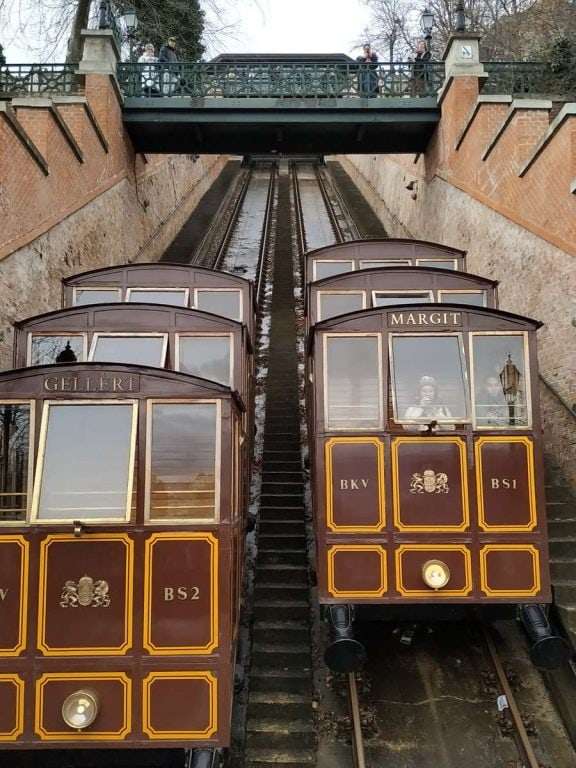
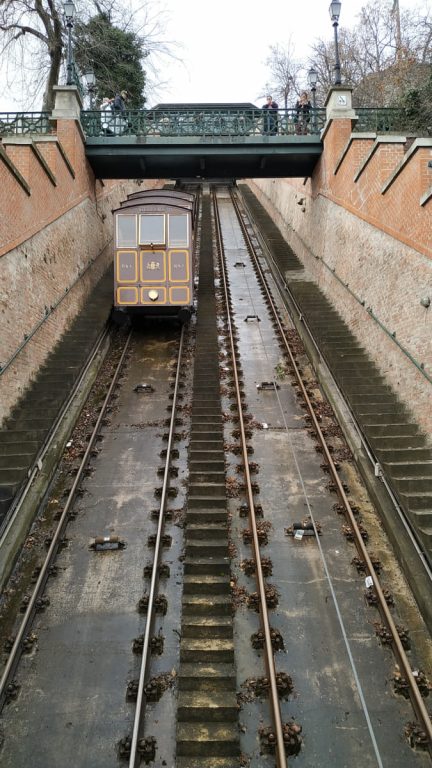
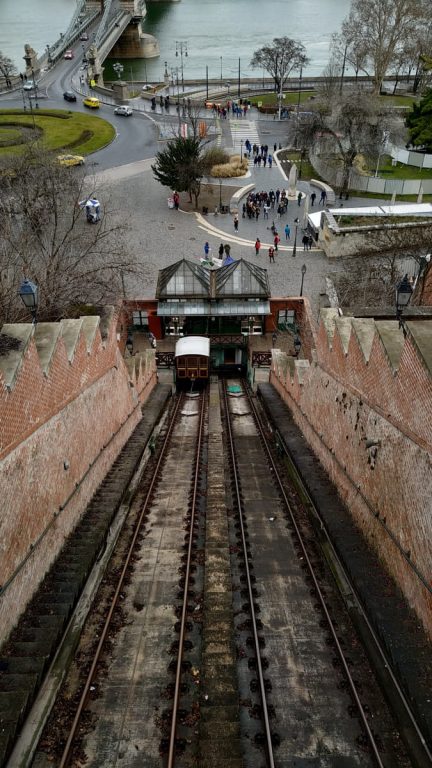
Opened in 1870, the Castle Hill Funicular was the second to be built in Europe. During World War II it was partially destroyed. However, it was recovered just like the original and reopened in 1986.
The funicular has several landings, from which we can get a privileged view of it. It is so mesmerizing that we were able to watch it go up and down the hill for hours.
Hour: 7.30 am to 10 pm (daily)
Entry – Adults:
- 1200 HUF / 3.55€ (one way)
- 1800 HUF / 5.30€ (round trip)
Chain Bridge
The Chain Bridge or also known as the Chain Bridge is the most famous bridge in Budapest. Any tourist visiting the city wants to take a photo or walk across the bridge.
Completed in 1849, it was intended to unite the two banks of the river. Also known locally as the Széchenyi Bridge in honour of the count István Széchenyi, its creator.
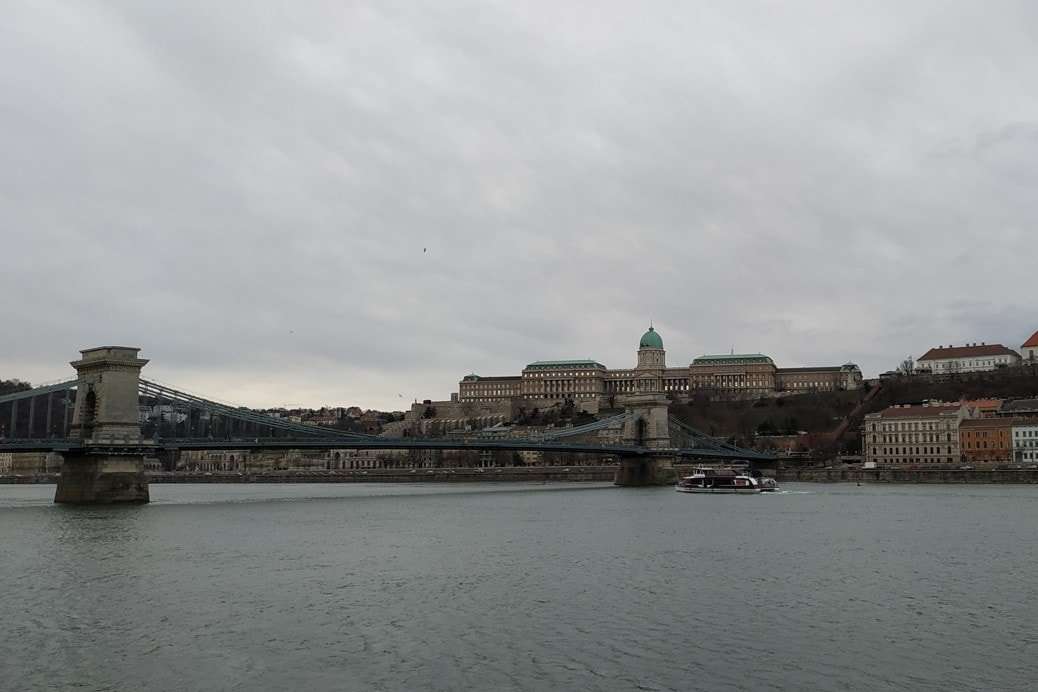
It was an important milestone in the history of the country, since before its construction, the banks of the Danube, could only be crossed by boat. The current bridge is not the original. During World War II, it was largely damaged by the Germans, being reconstructed later.
Crossing the bridge at night is a good opportunity to gaze upon the illuminated Buda Castle. But, by day the view is just as beautiful.
City Park (Városliget)
One of the green spaces of Budapest is the City Park, known locally as Városliget. The inhabitants of Budapest, take great advantage of this park, especially at the hottest time of the year.
Initially, it was used as a hunting enclosure. Today that is no longer the case, being one of the first public parks created in the world.
For those who love nature, like us, it is a must-visit. The autumn colours of the park are fantastic for photography, as we can prove it.
Along the park, we can find places like the Szechenyi thermal baths, the Vjdahunyad Castle, the Heroes’ Square, or even the Botanical Garden.
In the City Park, depending on the time of year you visit the experiences may be different. In the spring/summer seasons it is possible to hire a boat and walk along the lake. In the autumn/winter there is an ice slope for the more adventurous.
Szechenyi baths
Located in the city park (Városliget) and are the most well-known and sought-after in Budapest.
The building is stunning inside and out, a neo-baroque style. The thermal waters of Szechenyi are said to have therapeutic properties, ideal for those who suffer from joints and beyond. Many Hungarians who visit this spa complex take the opportunity to relax, socialize, and even play chess.

To enter the Szechenyi thermal baths there are several tickets. You can check everything here. If you don’t bring the essentials to the shower, such as a towel and slippers, these can be rented there. Once tickets have been purchased (buy in advance to avoid queues), you will be given a wristband, which acts as a key and allows access to the lockers/cabins.
The Szechenyi thermal baths being the most popular, are always full of tourists. There are great alternatives such as the Rudas Baths or the Gellert Spa. If you’re looking for a quieter atmosphere perhaps these are good options.
Vjdahunyad Castle
The Vajdahunyad Castle located in the City Park was built in 1896. One of the curiosities is that originally it was made of cardboard and wood, but, it became so popular that it had to be rebuilt in stone and brick.


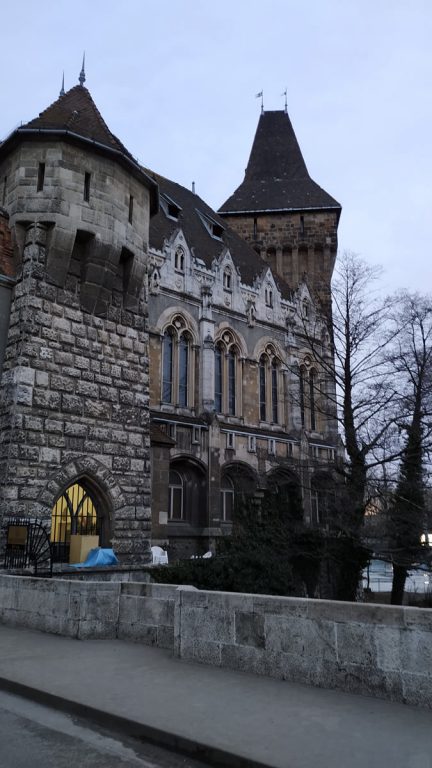
On the castle grounds, we can find the largest agricultural museum in Europe, the Hungarian Agriculture Museum. The interior of the castle is an interesting space to visit.
In the castle courtyard is the statue of Anonymus. According to popular belief, if we touch the pen he holds, we will be good writers. The gardens of the castle are open 24 hours all year round. For more information on castle entrance prices, museum and opening hours visit the Vajdahunyad Castle page.
Heroes’ Square & Millennium Monument
One of the largest and most important squares in Budapest is the Heroes Square. On it is located the Millennium Monument, built-in 1896.
This represents the commemoration of the country’s 1000th anniversary. The monument consists of several figures of former tribal chiefs and other important characters in the history of Hungary.


If you visit Heroes Square at night you will be amazed by the lighting.
Andrássy Avenue
The Andrássy Avenue is often dubbed the Champs-Élysées of Budapest. It runs through the heart of Pest and is a Unesco World Heritage Site.
It originated in 1872 and is one of the main avenues for shopping, cafés, restaurants, theatres, embassies, and luxury shops. It is lined with spectacular mansions and villas with neo-Renaissance facades.
The avenue is formed by four main parts. An urbanized part composed mostly of commercial shops, a wooded part where the residential areas and universities are, a part where we can find villas surrounded by gardens and embassies, and finally a place where the residential palaces with small parks in front are located.
Ao longo da Andrássy Avenue existem edifícios notáveis, como é o caso da Ópera Estatal da Hungria, que oferece visitas guiadas e mini-concertos, o Post Office Museum, the Memorial House of Franz Liszt, the College of Fine Arts, among others.
House of Terror
The House of Terror is a museum located on Andrássy Avenue.
Its history dates back to 1944 when already at the end of World War II, the Hungarian Nazi Party took over Budapest and this building functioned as its headquarters. Fortunately, the Hungarian Nazi Party known as ‘Arrow Cross’ did not last long and one month later it dissipated.
But between 1945 and 1956 the communist police occupied the building, where they tortured thousands of people.
In 2002 it was transformed into a museum. Inside we can find exhibits related to fascism and communism. There is also a memorial dedicated to all the victims of these regimes.
Hour: 10 am to 6 pm (daily, closed on Mondays)
Entrance: 3000 HUF (about 8.90€)
Hungarian Parliament

The Hungarian Parliament is perhaps the most iconic and most visited building in all of Hungary. It is the second-largest in Europe and the third-largest in the world, behind only Romania and Argentina parliaments.
Built between 1884 and 1902, it is immense work, with about 700 rooms and offices. At the time it was the largest work ever done and demonstrated the economic power of Hungary.
The Hungarian Parliament can easily be admired from one of the viewpoints on the Buda side. Whether by day or night it never fails to be impressive.
The visit to its interior is undoubtedly one of the tours we can most recommend in Budapest. We are sure that you will not be disappointed. It is advisable to buy tickets in advance as the number of people per day is limited.
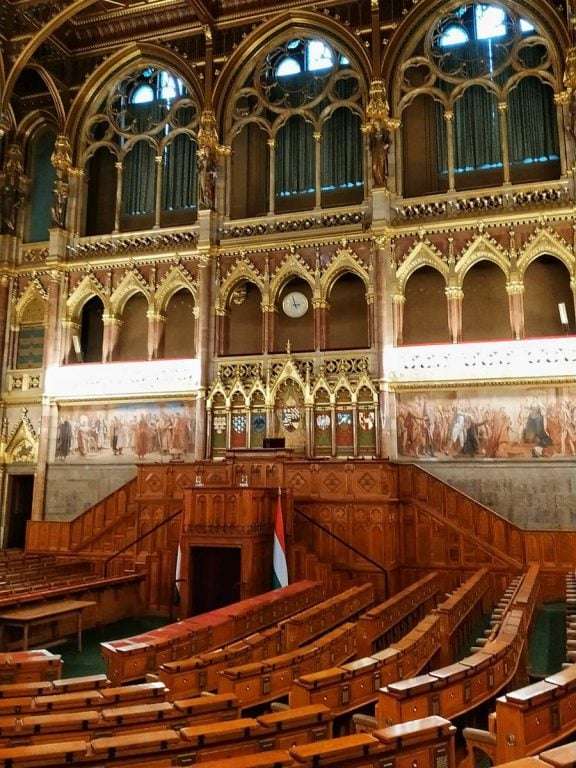


To do this, simply choose the language of the tour, on the day carry the email you received on your phone, and show it at the entrance. It’s super simple.
In its interior, we highlight the main staircase, the old Upper Chamber, currently used for tourist purposes, and the dome room, where statues of the kings of Hungary and their belongings are arranged, highlighting the crown of the first Hungarian king.
In this last room, photographs are prohibited to safeguard the items presented.
Shoes on the Danube Bank
It is a memorial erected in April 2005, in honour of the Jews killed during World War II. Here, Jews were forced to remove their shoes and subsequently shot on the bank so that their bodies would fall into the river.


The memorial is modest and perhaps most people won’t even know the significance. Constantly, tourists take selfies at this spot. For us, it was heart-wrenching to imagine the thousands of Jews killed there.
If you go to Budapest, it is a must-visit, for the simple fact that we should not forget this macabre part of history.
Liberty Square
In the heart of Budapest, not far from the margins of the Danube, we can find Liberty Square.
In it, we can find residential buildings, but also offices. On one side is the embassy of the United States of America, on the other is the headquarters of the Hungarian National Bank.
Monuments honoring Ronald Reagan and Harry Hill Bandholtz and a memorial to honor the Soviet liberation of Hungary in World War II are also arranged.
Passing this spot is almost inevitable for anyone leaving the Chain Bridge or heading towards the Shoes on the Danube Bank.
St. Stephen’s Basilica
Erected in honour of Stephen, the first King of Hungary, the Basilica of St. Stephen is a sensational building. Dating back to the 19th century, the Basilica has a capacity of about 8000 people and is the largest in Budapest.

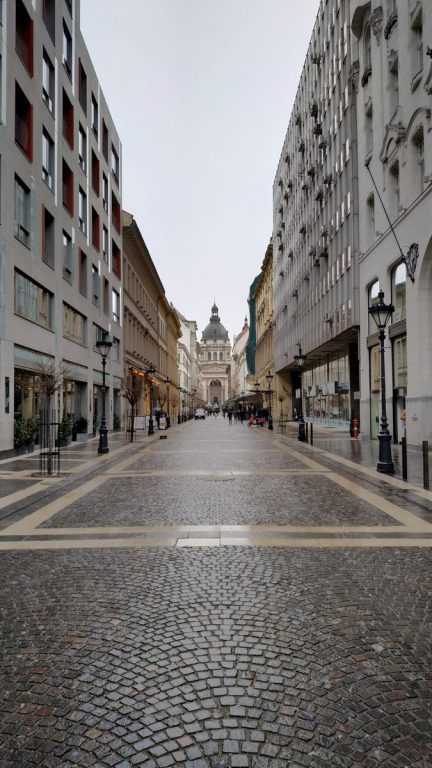
It has two bell towers but it is its dome that attracts the most tourists. This is because it is possible to climb it and enjoy the panoramic view from the terraces.
In addition, its interior is to be awestruck. We highlight the stained glass, the pipe organ, and all the interior ornamentation.
There are several restaurants adjacent to the Basilica which in the evening fill up with tourists to dine and contemplate the lighting around. On some specific days, it is possible to enjoy organ concerts open to the public. Tickets must be purchased in advance at the Basilica website.
Night Danube cruise
The night cruise on the Danube is almost a must for ending your Budapest trip on a high note.
During the route we can get another view of all the points of the city, not to mention that in the late afternoon/early evening it is magnificent to see all the attractions lit up.

There is an infinity of options for cruises on the Danube. Some come and englobing dinner, concerts or simply just a drink. According to the cruise chosen, there are also different boats. The cruise may also be day or night.
We opted for the cheapest and bought from Get Your Guide.
We strongly recommend it for those who don’t want to leave Of cruising and spending little money.
Our cruise was the night cruise with a drink and live music on offer, about 9€ per person. The meeting point is marked when you buy your ticket online and you just need to take the electronic confirmation to get on board.
Our cruise as it was at 7 pm, was held on a big boat. This was because the bottom part of the boat was for those who had dinner tickets and the top part for those who only had a free drink and live music tickets, which was our case.
Don’t worry about the cold, as the boat is glassy and has heating. Although, we spent much of the time outside on the balconies because of the view. The cruise we went on, also encompassed a brief description/explanation of each attraction we passed.
Day 3 – Travel Itinerary
Military Museum
Located near the Mary Magdalene Church, the Museum of Military History is a pleasant surprise. It is concentrated within the Nándor Barracks building.
In its interior, we can learn more about the history and battles fought by the Hungarian people throughout the ages. Made up of 3 floors, each floor is divided into areas. Here are arranged all the stories of the I and II World Wars and the Hungarian Revolution of 1956, in the communist period.
There are various items presented, such as equipment, clothes, weapons, flags, numismatics among others. On its exterior, we can also have a fantastic view of the Pest side.
For more information on schedules and ticket prices see here.
Mary Magdalene Church
In our stay in Budapest, we had the privilege of staying so close to the Mary Magdalene Church, that from the balcony of our room we could contemplate it.
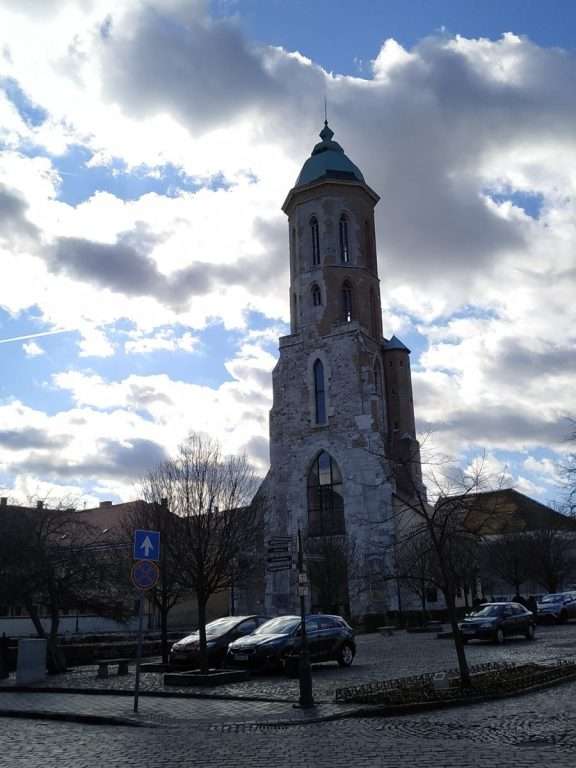

It was built between the 13th and 15th centuries in the Gothic style. The church was the site of the crowning of Francis II, Roman emperor, as King of Hungary.
By World War II the church was largely destroyed. For decades it was closed to the public, was rebuilt and reopened, allowing an extraordinary view over some of Budapest’s most important buildings.
Its 170 steps are well worth the climb.
Hour: 10 am to 6 pm (daily)
Entrance: 1500 HUF (about 4.50€)
Hospital in the Rock
The Hospital in the Rock was the name given to a hospital created in the caves beneath Buddha Castle. This was intended as a preparation for World War II. Being that it would provide general emergency care to civilians and wounded soldiers.
The hospital was connected by a network of tunnels. For its time it was one of the most advanced, having contributed to the salvation of thousands of lives, both civilians and soldiers.
At the time of our visit to Budapest (February 2020), some of the hospital rooms were under renovation and visits were limited.
Hour: 10 am to 7 pm (daily)
Entrance: 4000 HUF (about 11.90€)
Matthias Church
The Matthias Church may not have the dimensions of other sights in the city, but for us, the whole surrounding area was among the places we enjoyed most in Budapest.
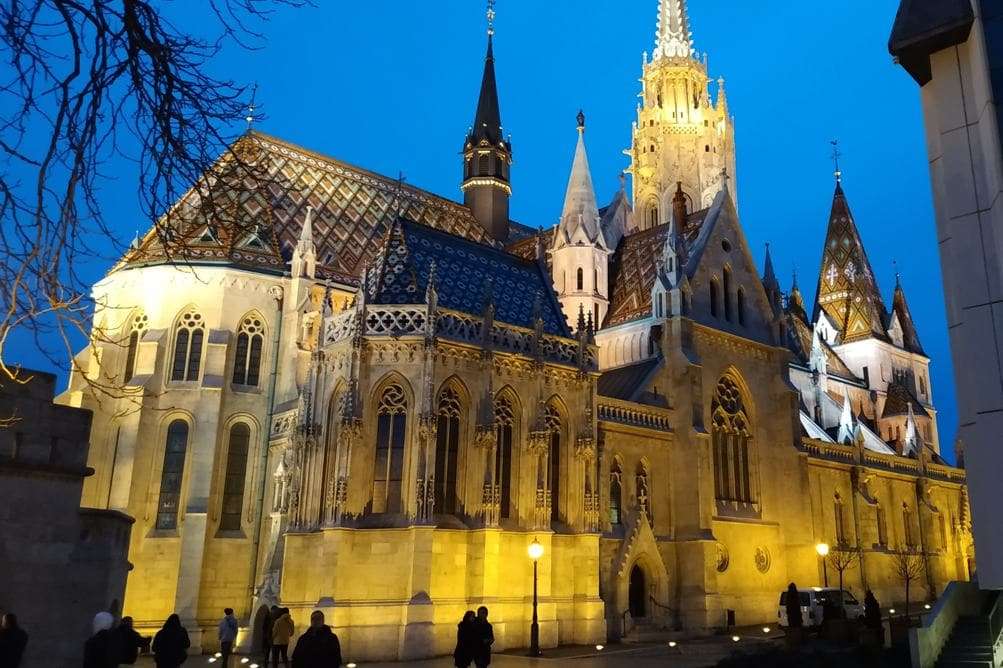
Began its construction in the 11th century, after the country converted to Christianity. It was rebuilt already in the 14th century, in the Gothic style. At the end of the 19th century, it underwent an intense renovation and is currently a mixture of Romantic, Gothic, Baroque, and Renaissance styles.
It houses an Ecclesiastical Museum, being among the most historically important. The museum contains diverse holy relics, medieval stone sculptures, replicas of the Hungarian royal crown, and coronation jewels.
It was the site of royal weddings and coronations, such as that of King Charles IV, the last king of the Habsburg dynasty, in 1916. The tombs of Béla III and his wife Agnes of Antioch are located here.
The church has 7 bells, 3 of them are ancient, dating from 1723, 1724, and 1891 respectively. It occasionally hosts organ and classical music concerts.
Time:
- Monday to Friday – 9am to 5pm
- Saturday – 9am to 1pm
- Sunday – 1pm to 5pm
Entrance: 1800 HUF (about 5.30€)
Fisherman’s Bastion
For us, the Fisherman’s Bastion was the highlight of our visit to Budapest. It is simply sensational, at night with all its lighting it is magical.



To all its visitors, the Fisherman’s Bastion provides one of the best panoramic views over Pest, the Danube, and Margaret Island.
It was inaugurated in 1902 and since 1987 it has been part of the Unesco World Heritage Site. It is a medieval-looking building in a neo-Gothic and neo-Romantic style.
Many times appointed as a fortress, it was never used for that purpose. It has 7 towers, representative of the 7 Hungarian tribes founding the city. There is also a bronze statue of Stephen I on horseback, erected in 1906.
Access to the Fisherman’s Bastion is free for most of the towers, with the exception of the tallest towers. Most of them are open permanently, with late afternoon perhaps the busiest time for tourists.
Other Points of Interest in Budapest
Margaret Island
It was one of the places that in our short stay in Budapest we didn’t get to visit. However, if you have more time in the city it is not to be missed.
Situated in the middle of the Danube, between Buda and Pest, the island is largely covered by parks, gardens, and recreational areas. It has medieval ruins that hark back to the Middle Ages.
It was declared a public space in 1908. Today it is sought after not only by Budapestinians but also by tourists visiting Budapest.
It owes its name to Saint Margaret, the daughter of King Béla IV of Hungary. This one lived in the Dominican Convent on the island.
To explore the island one can do so on foot. However, this is quite large and it will take some time to do so. We therefore suggest:
- hire a bicycle, about 990 HUF for 1h (€3);
- hire a small golf cart, 4900 HUF (€14.50) per hour with 4 seats;
- take the tourist train, for 800 HUF per person (€2.40), and you have to wait until it is full.
For more information on tours, attractions, prices, or what to visit in Budapest leave a comment below.

